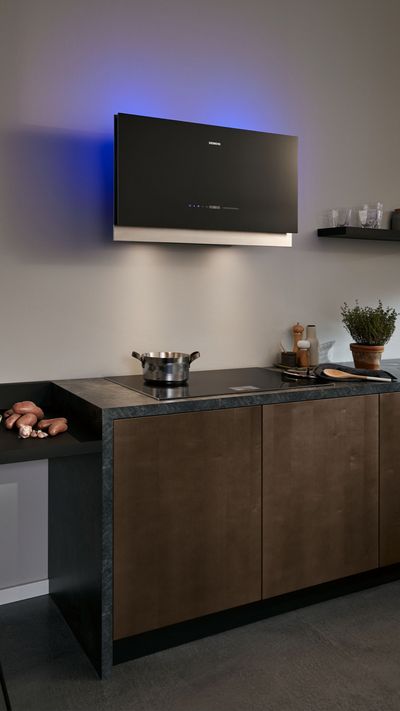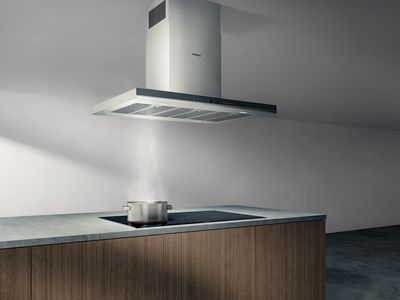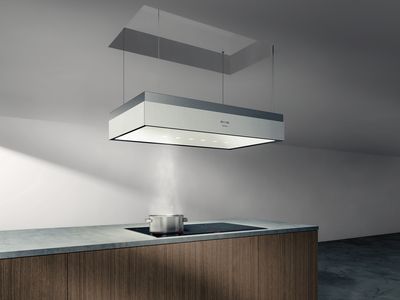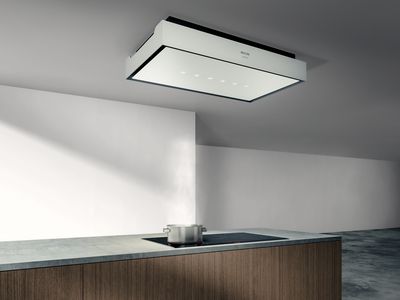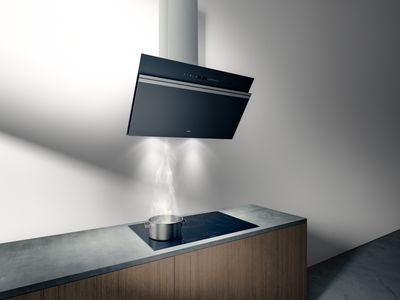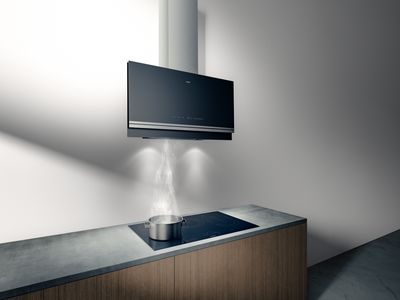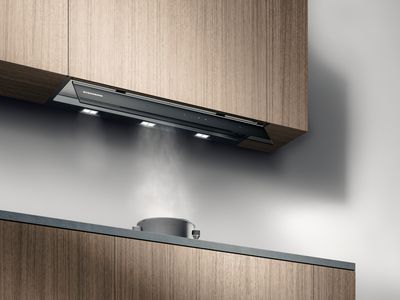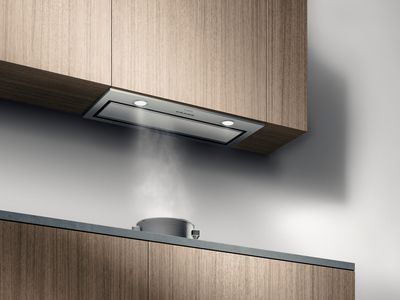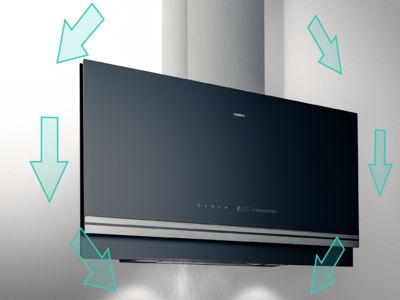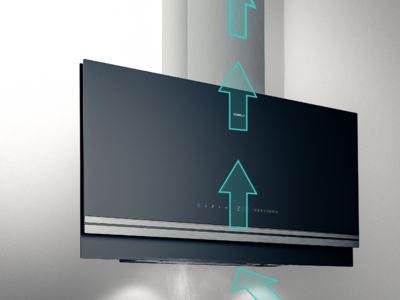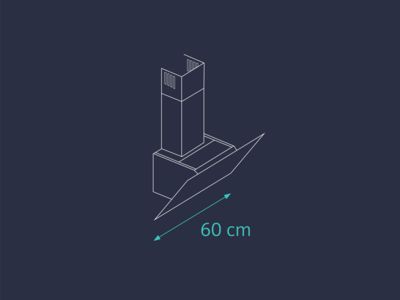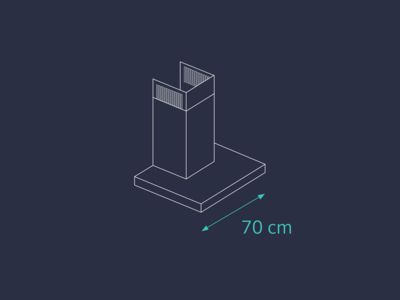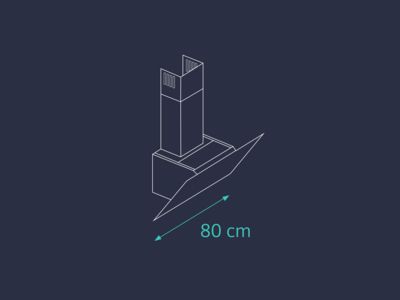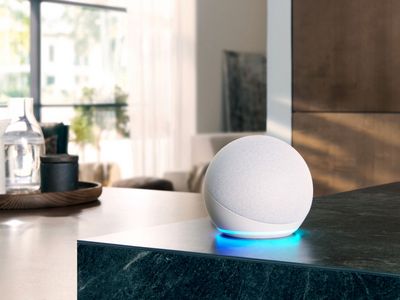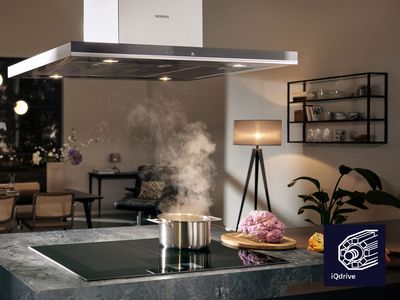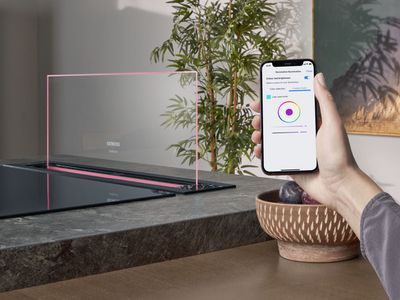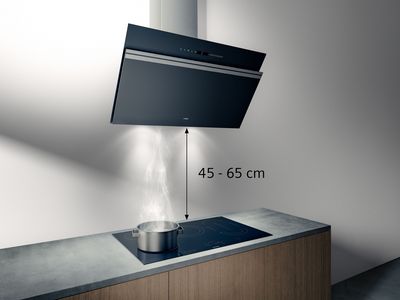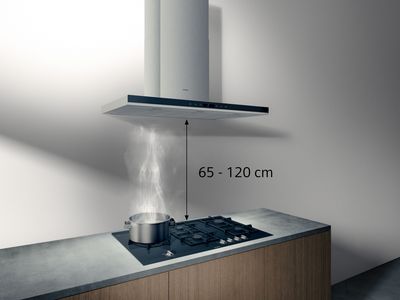Cooker hoods come in all shapes and sizes. To find one that best suits your needs: compare the benefits of ductless vs extractor hoods, weigh up your design and installation options, match the size to your hob and kitchen, consider noise levels, and see what innovative features are available. This helpful cooker hood guide answers the most common questions.
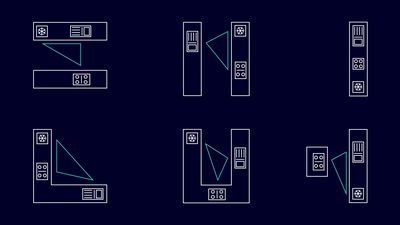
Which hood is right for your kitchen layout?
The first thing to consider when choosing a cooker hood is the layout of your kitchen. While most hoods will work in an L-Shape or U-Shaped kitchen, if you have a kitchen island, you’ll want to avoid wall mounted models. To find out more about kitchen layouts, read our kitchen planning guide.
Which island cooker hoods are best for me?
To find out which cooker hood is right for your island hob, consider these key differences. Downdraft ventilators are the most quiet and discreet but take up space beneath the worktop. The generally more powerful ceiling cooker hoods are ideal for people who cook a lot and can blend in by sitting flush with the ceiling or double as a design feature. Island chimney hoods are big and bold. These eye-catching hoods are typically used in large open-plan kitchens.
Which wall mounted cooker hood is best for me?
Wall mounted hoods are ideal for any kitchen in which the hob is placed against a wall, such as an L-Shape or U-Shaped kitchen. There are a range of options to choose from, depending on your personal preference and overall kitchen design. Integrated design hoods, for example, are perfect for a built-in kitchen.
Ductless vs extraction: which cooker hood is best for me?
Whether you’re looking for a wall mounted hood, a chimney hood, an island hood, or any other type - most cooker hoods are available in either ductless (recirculation) or extraction (exhaust air) versions. Deciding between the two is largely a matter of personal preference but there are a few factors to consider. Exhaust air hoods are generally more efficient and easier to maintain. They are also better at removing heat and moisture and often quieter since they don’t use strong fans to recirculate filtered air. However, they must be professionally installed. Ductless hoods are far more flexible as they can be easily installed, anywhere. This also gives you more design options when remodelling your kitchen.
What size cooker hood do I need?
To keep your kitchen free of smoke and odors, your cooker hood must be at least the same width as your hob. However, 1.5 times wider is the ideal size. You should also make sure the extraction rate of the hood is sufficient for the size of your kitchen.
Power levels: how many cfm do I need for my range hood?
The power of a cooker hood, how much air it can extract, is measured in cubic feet per minute (CFM). The minimum hood CFM required for a standard width electrical hob (60cm) is 600CFM. However, the same size gas hob will give off more heat and therefore need more power. Of course, larger hob sizes and bigger kitchens will need an even higher CFM rating. The CFM requirement is also affected by duct size, starting at 400 CFM for the smallest and exceeding 1200 CFM for the largest ducts.
Cooker hood noise levels
Since cooker hoods are designed to create a comfortable cooking environment, noise level is an important consideration. The amount of noise increases as the extraction rate goes up, with the average cooker hood producing between 60 – 70 decibels of sound on its highest power setting. Anything above this is likely to be distracting.
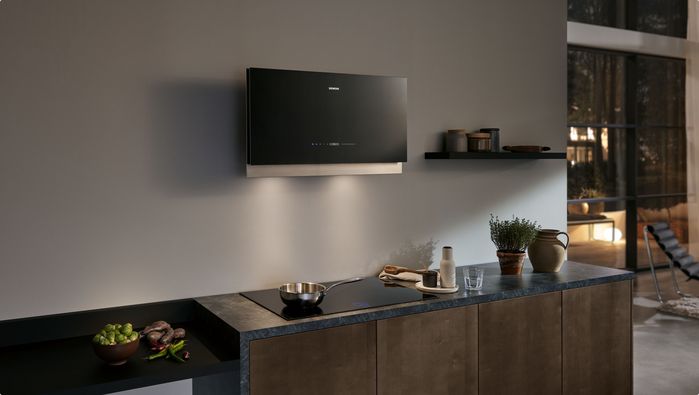
What is the quietest range hood?
The wider your hood dimension is, the less noise it makes because there is more space for air flow. Any range hood with a sound output of between 40 – 60 decibels is considered to be very quiet.
What innovative features does Siemens offer?
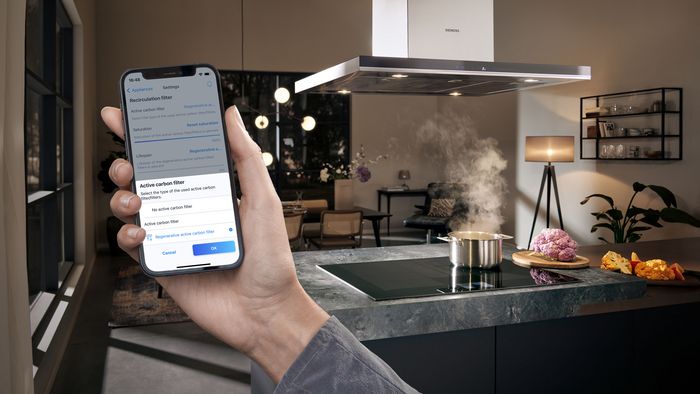
With a Siemens WiFi-enabled cooker hood, you have access to a range of intelligent connectivity features via the Home Connect app. Check the status of your grease and carbon filter and get automatic reminders when you need to clean, exchange or regenerate them. You can also connect a smart speaker and set up voice commands or select and start your hood from your mobile device whenever you want, from wherever you are.
How high should a cooker hood be installed?
The amount of clearance required depends on which type of hob you choose. For standard electric, ceramic and induction hobs, the lowest part of your cooker hood should be between 55 – 70cm high while gas hobs need a clearance of at least 65cm – and more for larger appliances.

